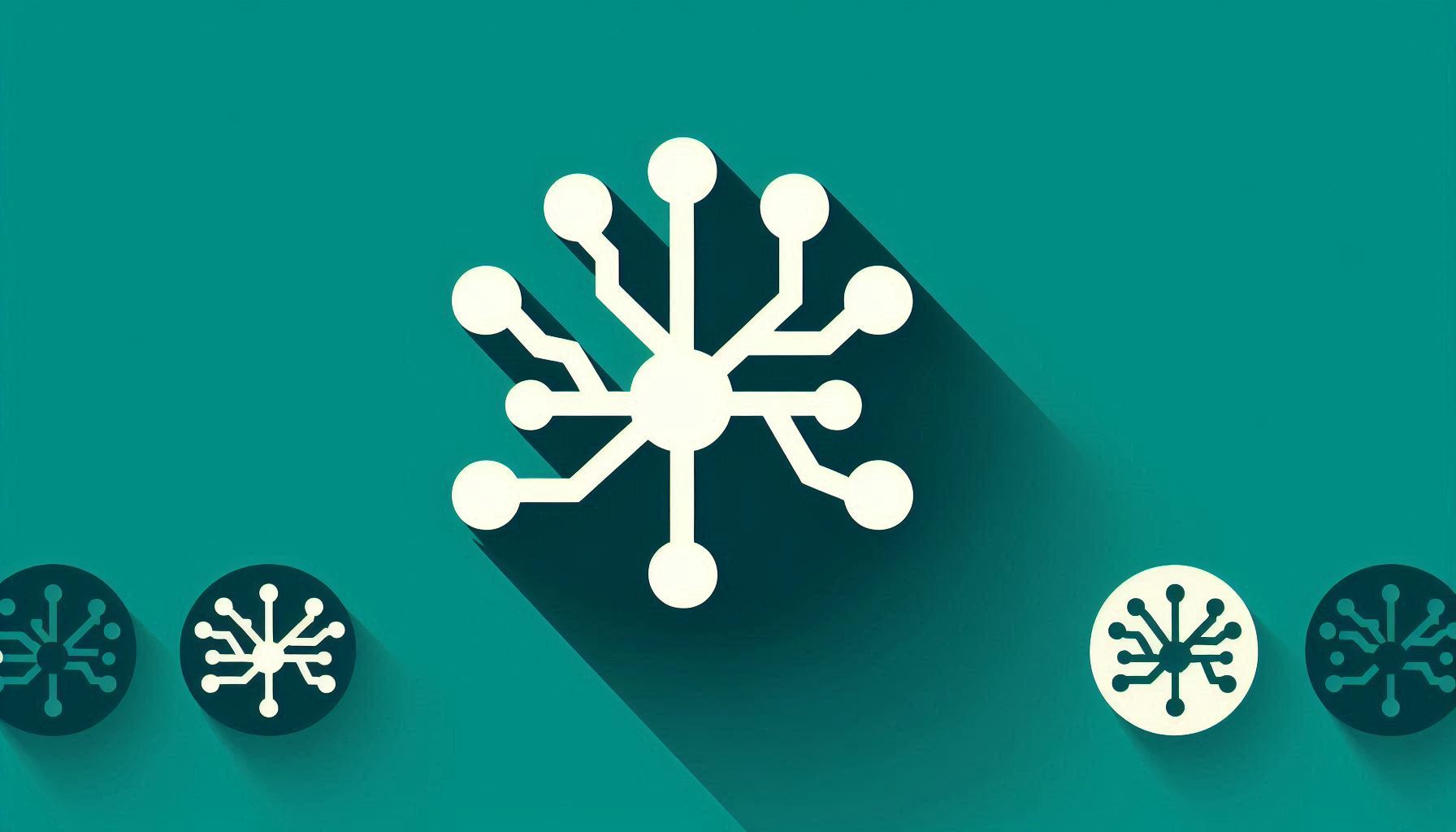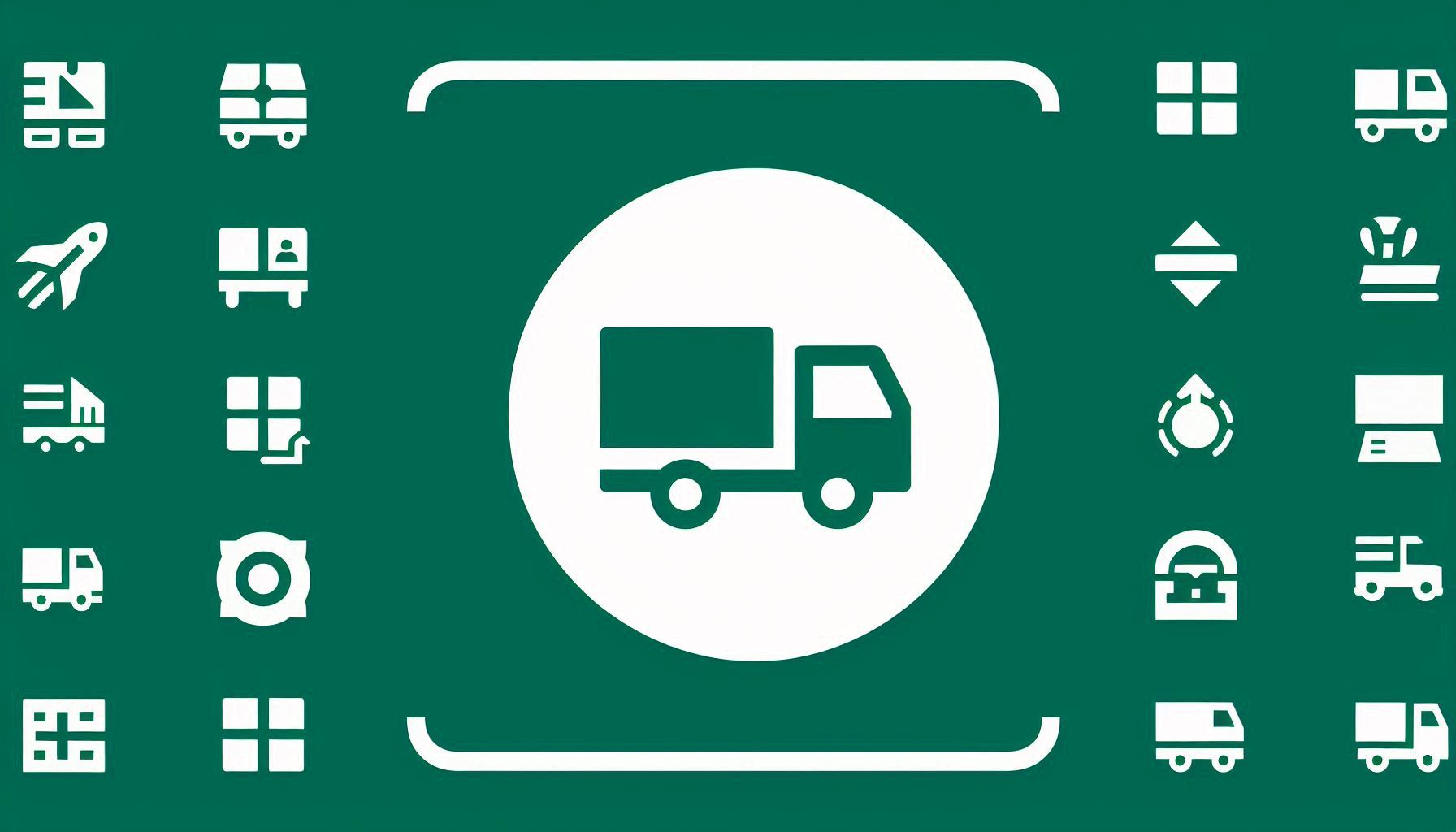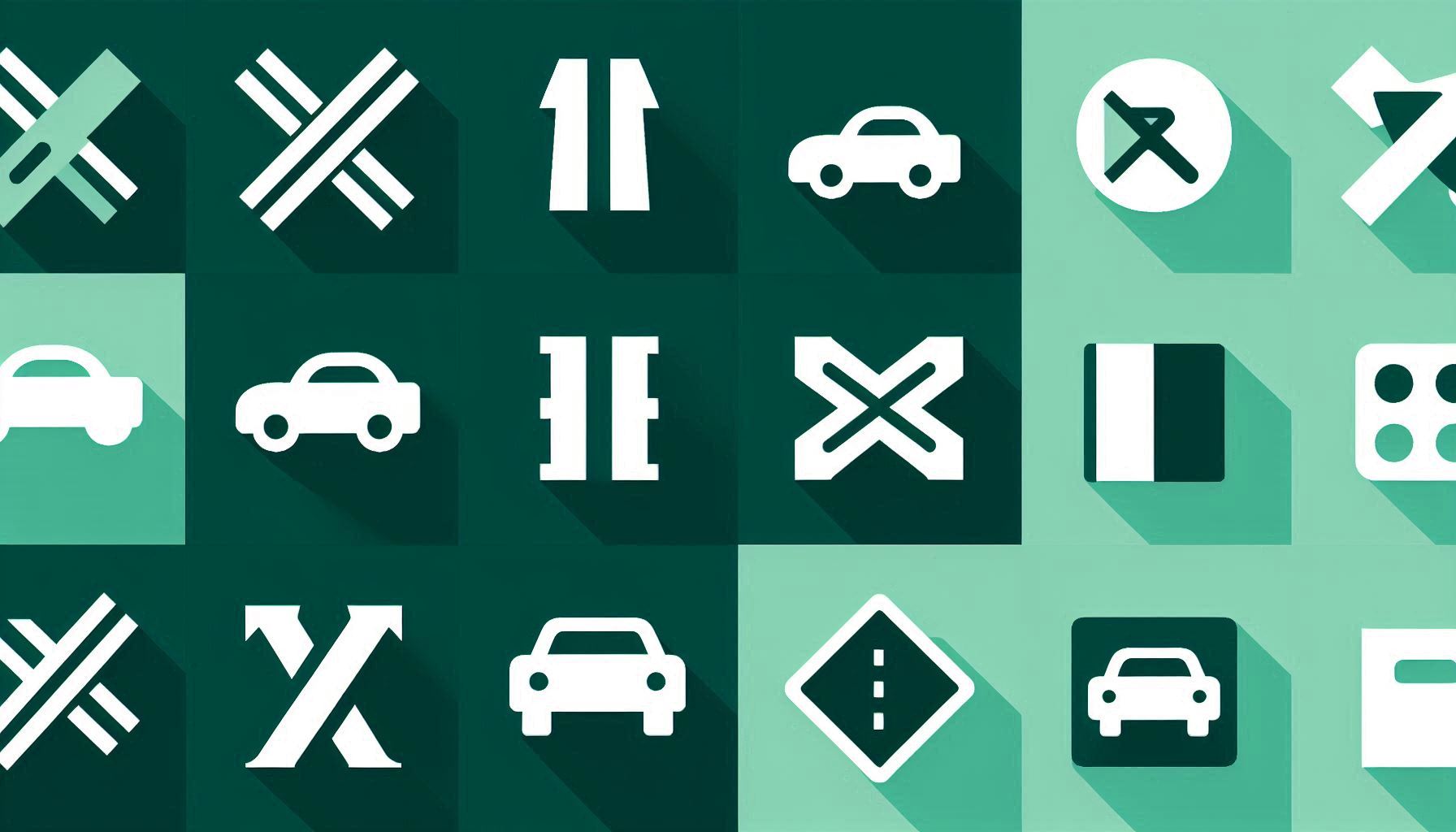A Review of Research on Coordinated Control of Traffic Signals at Urban Road Intersection Groups

Downloads
Effective traffic signal coordination is essential for urban intersection groups, helping reduce delays and improve throughput efficiency. This paper systematically reviews the progress in intersection group signal coordination control, focusing on four main aspects. First, an overview of partitioning methods is provided from both static and dynamic perspectives. Next, optimisation-based signal coordination is classified into two main approaches: single-objective and multi-objective control. We then present advanced adaptive signal control strategies, with a focus on deep reinforcement learning techniques. Finally, signal coordination in intelligent and connected environments is explored, addressing three key scenarios: trunk roads, road networks and non-signalised intersections. The research shows that intersection group partitioning is moving toward dynamic and multi-criteria approaches. Signal coordination is shifting toward multi-objective optimisation and proactive adaptive control to address complex traffic environments. Deep reinforcement learning, particularly deep Q-networks and its variants, has been widely applied in adaptive signal control for real-time traffic flow adjustments. In intelligent and connected environments, the collaborative optimisation between intersections is a key research focus. This paper provides a theoretical framework for intersection group signal coordination, with broad applications in improving traffic efficiency, reducing congestion and advancing intelligent transportation systems.
Downloads
Macioszek E, Iwanowicz D. A back-of-queue model of a signal-controlled intersection approach developed based on analysis of vehicle driver behavior. Energies. 2021;14(4):1204. DOI: 10.3390/en14041204.
Gao Y, Hu H, Chen H, Yang J. Research and simulation of intersection group signal control real-time evaluation model. Journal of System Simulation. 2007;19(24):5607-5612,5616. (Chinese)
Yang J, Guo X. Dynamic traffic coordination control method for intersection group. Southeast University Press, 2013.
Li Y, Guo X, Tao S, Yang J. NSGA-II based traffic signal control optimization algorithm for over-saturated intersection group. Journal of Southeast University (English Edition). 2013;29(2):211-216. DOI: 10.3969/j.issn.1003-7985.2013.02.018.
Ferguson AJ. Computer control of traffic: Combining subareas. IFAC Proceedings Volumes. 1976;9(4):363-374. DOI:10.1016/s1474-6670(17)67312-9.
Liang X, Guler SI, Gayah VV. A heuristic method to optimize generic signal phasing and timing plans at signalized intersections using connected vehicle technology. Transportation Research Part C-Emerging Technologies. 2020;111,156-170. DOI: 10.1016/j.trc.2019.11.008.
Yang J, Guo X, Liu Y, Liang H. Dynamic scope identification for urban intersections group with traffic coordination control. Journal of Transportation Systems Engineering & Information Technology. 2014;14(3),28-33. (Chinese)
Yagoda HN, Principe EH, Vick CE, Leonard BG. Subdivision of signal systems into control areas. Traffic Engineering, Inst Traffic Engr. 1973;43(12),00226825.
Tian Z, Urbanik T. System partition technique to improve signal coordination and traffic progression. Journal of Transportation Engineering. 2007;133(2):119-128. DOI:10.1061/(ASCE)0733-947X(2007)133:2(119)
Ji Y, Geroliminis N. On the spatial partitioning of urban Transportation networks. Transportation Research Part B-Methodological. 2012;46(10):1639-1656. DOI: 10.1016/j.trb.2012.08.005.
Yang J, et al. Modeling route correlation degree of urban signalized intersection group. Journal of Transportation Systems Engineering & Information Technology. 2012;12(1):55-62. (Chinese)
Saeedmanesh M, Geroliminis N. Clustering of heterogeneous networks with directional flows based on “Snake” similarities. Transportation Research Part B-Methodological. 2016;91:250-269. DOI: 10.1016/j.trb.2016.05.008.
Tang Q, Huang L, Ao G. Signal coordination control intersection group partitioning division method based on improved self-organizing map. Science Technology and Engineering. 2019;19(20),375-382. (Chinese)
Wang H, Chen D. Clustering analysis and classification algorithm for urban intersections. Journal of Highway Transportation Research and Development. 2019;36(7):121-126,142. (Chinese)
Whitson RH, White B, Messer CJ. Arterial progression control as developed on the mockingbird pilot study. Texas Transportation Institute, College Station and Dallas, Texas. 1973;00225049.
Hu H, Gao Y, Yang X. Method of intersection-group dynamic division considering OD path in road network. Computer Engineering and Application. 2010;46(31):1-4,18. (Chinese)
Ma Y, Yang X, Zeng Y. Urban traffic signal control network partitioning using spectral method. System Engineering-Theory & Practice. 2010;30(12):2290-2296. (Chinese)
Lu K, Xu J, Zheng S. Research on fast dynamic division method of coordinated control subarea. Acta Automatica Sinica. 2012;38(02):279-287. (Chinese)
Shou Y, Xu J. Division of coordinated control subareas based on group dynamics theory. Journal of South China University of Technology, Natural Science Edition. 2013;41(04):77-82. (Chinese)
Shen G, Yang Y. A dynamic signal coordination control method for urban arterial roads and its application. Frontiers of Information Technology & Electronic Engineering. 2016;17(9):907-91. DOI:10.1631/FITEE.1500227.
Saeedmanesh M, Geroliminis N. Dynamic clustering and propagation of congestion in heterogeneously congested urban traffic networks. Transportation Research Part B-Methodological. 2017;23:962-979. DOI: 10.1016/j.trb.2017.08.021.
Dimitriou L, Nikolaou P. Dynamic partitioning of urban road networks based on their topological and operational characteristics. Proceedings in 2017 5th IEEE International Conference on Models and Technologies for Intelligent Transportation Systems (MT-ITS). IEEE, 2017; 457-462.
Hu Y, Wang Y, Zhang J, Yu, H. Correlation degree analysis of arterial adjacent intersections for coordinated control subunit partition. Advances in Mechanical Engineering. 2018;10(1):1687814017748748. DOI:10.1177/1687814017748748.
Qu D, et al. Dynamic partitioning method for road network intersection considering multiple factors. Journal of Jilin University (Engineering and Technology Edition.). 2019;49(5),1478-1483. (Chinese)
Lan H, Wu X. Research on key technology of signal control subarea partition based on correlation degree analysis. Mathematical Problems in Engineering. 2020;2020. DOI: 10.1155/2020/1879503.
Guan J, et al. Optimized design and technology on over-saturated intersection group dynamic traffic control. Proceedings of the 9th China Intelligent Transportation Annual Conference. 2014;213-223. (Chinese)
Keyvan-Ekbatani M, Papageorgiou M, Papamichail I. Urban congestion gating control based on reduced operational network fundamental diagrams. Transportation Research Part C: Emerging Technologies. 2013;33:74-87. DOI: 10.1016/j.trc.2013.04.010.
Han Y, Xing B, Yao J, Liu J. Optimal model of regional traffic signal control under mixed traffic flow condition. Journal of Traffic and Transportation Engineering. 2015;15(01):119-126. (Chinese)
Yan F, Tian F, Shi Z. An extended signal control strategy for urban network traffic flow. Physica A: Statistical Mechanics and its Applications. 2016;445:117-127. DOI: 10.1016/j.physa.2015.10.047.
Lu T, Bei X, Liu G, Zhang J. An area-wide traffic signal coordination method based on the deep first search of intersection’s importance. Journal of Transportation Systems Engineering and Information Technology. 2018;18(2):80-86. (Chinese)
Ma W, Wu Z, Yang X, Li X. A coordinated intersection-group bus signal priority control approach. China Civil Engineering Journal. 2009;42(02):105-111. (Chinese)
Lei L, Wu Y, Liu Y, Zhang Q. System modeling and optimization model of oversaturated intersection group. Computer Engineering and Applications. 2010;46(4):26-28. (Chinese)
Liu J, Liu X. Adaptive control method for supersaturated intersection group. Transducer and Microsystem Technologies. 2018;37(04):65-69. (Chinese)
Liu Y, Guo X, Shen J, Lyu F. Optimal control model of multiple bus requests for intersection group based on route priority. Journal of Southeast University (Natural Science Edition). 2018;48(6):1108-1113. (Chinese)
Bie Y, Liu Z, Wang H. Integrating bus priority and presignal method at signalized intersection: Algorithm development and evaluation. Journal of Transportation Engineering Part A: Systems. 2020;146(6):04020044. DOI: 10.1061/JTEPBS.000036.
Behbahani H., Poorjafari M. Proposing a kinematic wave-based adaptive transit signal priority control using genetic algorithm. IET Intelligent Transport Systems. 2023;17(5):912-928. DOI:10.1049/itr2.12316.
Gao Y, Hu H, Han H, Yang X. Multi-objective optimization and simulation for urban road intersection group traffic signal control. China Journal of Highway and Transport. 2012;25(6):129-135. (Chinese)
Chiou S. Optimization of robust area traffic control with equilibrium flow under demand uncertainty. Computers & Operations Research. 2014;41:399-411. DOI: 10.1016/j.cor.2013.06.008.
Hu X, Zhu X, Long B. A bus priority control model considering green wave coordination under cooperative vehicle infrastructure system. Journal of Transportation Systems Engineering and Information Technology. 2017;17(03):74-82, 119. (Chinese)
Jia H, et al. Multi-objective optimization of urban road intersection signal timing based on particle swarm optimization algorithm. Advances in Mechanical Engineering. 2019;11(4):1687814019842498. DOI: 10.1177/1687814019842498.
Wu S, Sun K, Liu L. Urban traffic signal timing optimization by reducing vehicle emissions. Proceedings of the 2020 International Conference on Urban Engineering and Management Science (ICUEMS), IEEE, 2020. DOI: 10.1109/ICUEMS50872.2020.00085.
Yu Y, Hou J, Gong D. Signal optimization of intersection group based on critical path control. Proceedings of the 15th China Intelligent Transportation Annual Conference. 2020;1:147-154. (Chinese)
Chen J, Xu L, Yuan C. Hierarchy control algorithm and its application in urban arterial control problem. Journal of Systems Simulation. 2008;15:4122-4127, 4131. (Chinese)
Li Y, et al. Routes classification method at intersections group using wavelet transform and spectrum analysis. Journal of Southeast University (Natural Science Edition). 2012;42(1):168-172. (Chinese)
Zhao P, Liu Z, Liu Y, Guo J. A coordination and optimization scheme for signals at over-saturated intersection groups in small-area based on fuzzy control. Journal of Transportation Information and Safety. 2018;36(4):51-59. (Chinese)
Jia Y, et al. Real-time control optimization method of supersaturated intersection group based on bobbin combination. Science and Technology and Engineering. 2020;20(36):15114-15120. (Chinese)
Seman L, Koehler L, Camponogara E, Kraus W. Integrated headway and bus priority control in transit corridors with bidirectional lane segments. Transportation Research Part C: Emerging Technologies. 2020;111:114-134. DOI: 10.1016/j.trc.2019.12.001.
Xu T, et al. Integrating public transit signal priority into max-pressure signal control: Methodology and simulation study on a downtown network. Transportation Research Part C: Emerging Technologies. 2022;138:103614. DOI: 10.1016/j.trc.2022.103614.
Nishi T, Otaki K, Hayakawa K, Yoshimura T. Traffic signal control based on reinforcement learning with graph convolutional neural nets. Proceedings of the 2018 21st International Conference on Intelligent Transportation Systems (ITSC), IEEE, 2018: 877-883. DOI: 10.1109/ITSC.2018.8569301.
Chu T, Wang J, Codecà L, Li Z. Multi-agent deep reinforcement learning for large-scale traffic signal control. IEEE Transactions on Intelligent Transportation Systems. 2019;21(3):1086-1095. DOI: 10.1109/TITS.2019.2901791.
Wu T, et al. Multi-agent deep reinforcement learning for urban traffic light control in vehicular networks. IEEE Transactions on Vehicular Technology. 2020;69(8):8243-8256. DOI: 10.1109/TVT.2020.2997896.
Devailly F, Larocque D, Charlin L. IG-RL: Inductive graph reinforcement learning for massive-scale traffic signal control. IEEE Transactions on Intelligent Transportation Systems. 2021;23(7):7496-7507. DOI: 10.1109/TITS.2021.3070835.
Arel I, Liu C, Urbanik T, Kohls A. Reinforcement learning-based multi-agent system for network traffic signal control. IET Intelligent Transport Systems. 2010;4(2):128-135. DOI: 10.1049/iet-its.2009.0070.
Tan T, et al. Cooperative deep reinforcement learning for large-scale traffic grid signal control. IEEE Transactions on Cybernetics. 2019;50(6):2687-2700. DOI: 10.1109/TCYB.2019.2904742.
Ge H, et al. Cooperative deep Q-learning with Q-value transfer for multi-intersection signal control. IEEE Access. 2019;7:40797-40809. DOI: 10.1109/ACCESS.2019.2907618.
Gong Y, Abdel-Aty M, Cai Q, Rahman M. Decentralized network-level adaptive signal control by multi-agent deep reinforcement learning. Transportation Research Interdisciplinary Perspectives. 2019;1:100020. DOI: 10.1016/j.trip.2019.100020.
Kim D, Jeong O. Cooperative traffic signal control with traffic flow prediction in multi-intersection. Sensors. 2020;20(1):137. DOI: 10.3390/s20010137.
Li D, et al. Adaptive traffic signal control model on intersections based on deep reinforcement learning. Journal of Advanced Transportation. 2020;2020(1):6505893. DOI: 10.1155/2020/6505893.
Xie D, Wang Z, Chen C, Dong D. IEDQN: Information exchange DQN with a centralized coordinator for traffic signal control. Proceedings of the 2020 International Joint Conference on Neural Networks (IJCNN), IEEE, 2020, 1-8. DOI: 10.1109/IJCNN48605.2020.9206820.
Li S. Multi-agent deep deterministic policy gradient for traffic signal control on urban road network. Proceedings of the 2020 IEEE International Conference on Advanced Electrical Engineering and Computer Applications (AEECA), IEEE, 2020, 896-900. DOI: 10.1109/AEECA49918.2020.9213523.
Rasheed F, Yau K, Low Y. Deep reinforcement learning for traffic signal control under disturbances: A case study on Sunway city, Malaysia. Future Generation Computer Systems. 2020;109:431-445. DOI: 10.1016/j.future.2020.03.065.
Zang X, et al. Metalight: Value-based meta-reinforcement learning for traffic signal control. Proceedings of the AAAI Conference on Artificial Intelligence. 2020;34(1):1153-1160.
Wang X, Ke L, Qiao Z, Chai X. Large-scale traffic signal control using a novel multiagent reinforcement learning. IEEE Transactions on Cybernetics. 2020;51(1):174-187. DOI: 10.1109/TCYB.2020.3015811.
Long M, Zou X, Zhou Y, Chung E. Deep reinforcement learning for transit signal priority in a connected environment. Transportation Research Part C: Emerging Technologies. 2022;142:103814. DOI: 10.1016/j.trc.2022.103814.
Yu J, Laharotte P, Han Y, Leclercq L. Decentralized signal control for multi-modal traffic network: A deep reinforcement learning approach. Transportation Research Part C: Emerging Technologies. 2023;154:104281. DOI: 10.1016/j.trc.2023.104281.
Zhang J, Wu K, Yang M, Ran B. Double-ring adaptive control model of intersection during intelligent and connected environment. Journal of Jilin University (Engineering and Technology Edition). 2021;51(2):541-548. (Chinese)
He Q, Head K, Ding J. PAMSCOD: Platoon-based arterial multi-modal signal control with online data. Transportation Research Part C: Emerging Technologies. 2012;20(1):164-184. DOI: 10.1016/j.trc.2011.05.007.
Kari D, Wu G, Barth M. Development of an agent-based online adaptive signal control strategy using connected vehicle technology. Proceedings of the 17th International IEEE Conference on Intelligent Transportation Systems (ITSC), 2014, 1802-1807. DOI: 10.1109/itsc.2014.6957954.
Wu W, Ma W, Yang X. Route-based signal coordination control model within vehicle infrastructure integration environment. Journal of Jilin University (Engineering and Technology Edition). 2014;44(2):343-351. (Chinese)
Li W, Ban X. Connected vehicles based traffic signal timing optimization. IEEE Transactions on Intelligent Transportation Systems. 2018;20(12):4354-4366. DOI: 10.1109/TITS.2018.2883572.
Yao J, Tan C, Tang K. An optimization model for arterial coordination control based on sampled vehicle trajectories: The STREAM model. Transportation Research Part C: Emerging Technologies. 2019;109:211-232. DOI: 10.1016/j.trc.2019.10.014.
Qi H, Dai R, Tang Q, Hu X. Coordinated intersection signal design for mixed traffic flow of human-driven and connected and autonomous vehicles. IEEE Access. 2020;8:26067-26084. DOI: 10.1109/ACCESS.2020.2970115.
Yao Z, et al. A dynamic optimization method for adaptive signal control in a connected vehicle environment. Journal of Intelligent Transportation Systems. 2020;24(2):184-200. DOI: 10.1080/15472450.2019.1643723.
Wang Q, Yuan Y, Yang X, Huang Z. Adaptive and multi-path progression signal control under connected vehicle environment. Transportation Research Part C: Emerging Technologies. 2021;124:102965. DOI: 10.1016/j.trc.2021.102965.
Zhang X, He Z, Zhu Y, You L. DRL-based adaptive signal control for bus priority service under connected vehicle environment. Transportation Metrics B: Transport Dynamics. 2023;11(1):1455-1477. DOI: 10.1080/21680566.2023.2215955.
Yan H, et al. Network-level multiband signal coordination scheme based on vehicle trajectory data. Transportation Research Part C: Emerging Technologies. 2019;107:266-286. DOI: 10.1016/j.trc.2019.08.014.
Mohebifard R, Al Islam S, Hajbabaie A. Cooperative traffic signal and perimeter control in semi-connected urban-street networks. Transportation Research Part C: Emerging Technologies. 2019;104:408-427. DOI: 10.1016/j.trc.2019.05.023.
Islam S, Hajbabaie A, Aziz H. A real-time network-level traffic signal control methodology with partial connected vehicle information. Transportation Research Part C: Emerging Technologies. 2020;121:102830. DOI: 10.1016/j.trc.2020.102830.
Moradi H, Sasaninejad S, Wittevrongel S, Walraevens J. The contribution of connected vehicles to network traffic control: A hierarchical approach. Transportation Research Part C: Emerging Technologies. 2022;139:103644. DOI: 10.1016/j.trc.2022.103644.
Chen X, Lin X, Li M, He F. Network-level control of heterogeneous automated traffic guaranteeing bus priority. Transportation Research Part C: Emerging Technologies. 2022;140:103671. DOI: 10.1016/j.trc.2022.103671.
Mirheli A, Hajibabai L, Hajbabaie A. Development of a signal-head-free intersection control logic in a fully connected and autonomous vehicle environment. Transportation Research Part C: Emerging Technologies. 2018;92:412-425. DOI: 10.1016/j.trc.2018.04.026.
Li Z, et al. Temporal-spatial dimension extension-based intersection control formulation for connected and autonomous vehicle systems. Transportation Research Part C: Emerging Technologies. 2019;104:234-248. DOI: 10.1016/j.trc.2019.05.003.
Beak B, Head KL, Feng Y. Adaptive coordination based on connected vehicle technology. Transportation Research Record. 2017;2619(1):1-12. DOI: 10.3141/2619-01.
Wang P, et al. A Cooperative control model of continuous signal intersections for connected vehicles. Journal of Transportation Safety and Security. 2021;39(1):145-154. (Chinese)
Copyright (c) 2025 Changxi MA, Yan LIU, Xuecai XU, Hongxing ZHAO

This work is licensed under a Creative Commons Attribution-NonCommercial 4.0 International License.




















